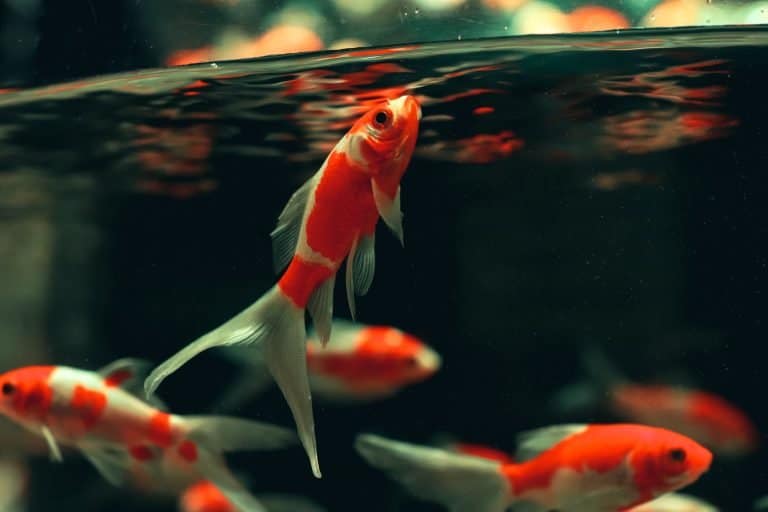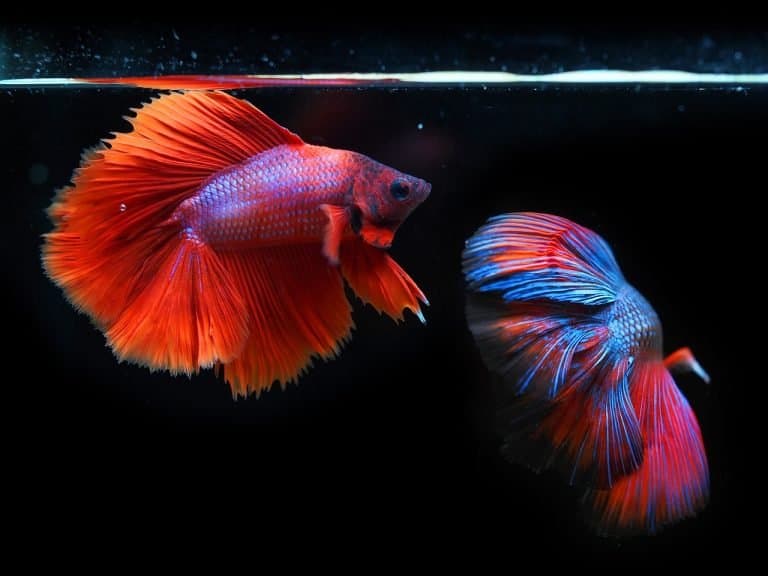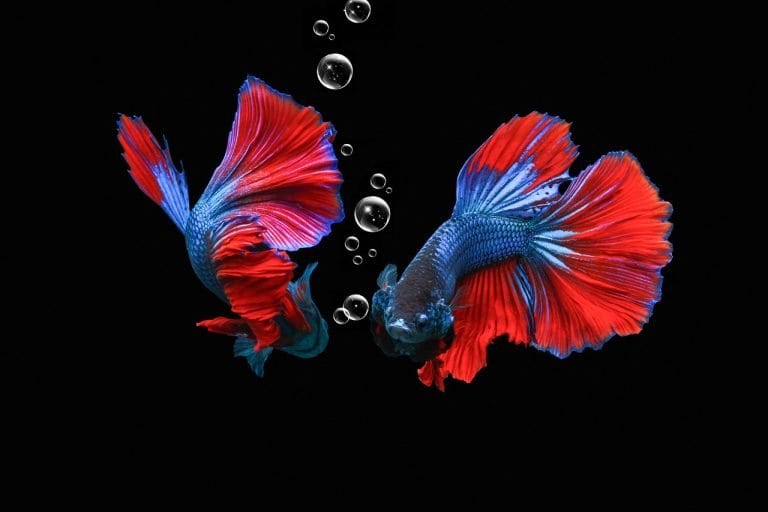Goldfish are one of the most popular aquarium fish in the world. Their vibrant colors and unique shapes make them a favorite among pet owners. However, when released into the wild, goldfish can pose a serious threat to the ecosystem.
In this article, we will explore the topic of goldfish in the wild and the impact they have on the environment.

Goldfish are not native to many parts of the world, and when released into the wild, they can become an invasive species. They are known to grow much larger than their domesticated counterparts, with some reaching up to 24 inches in length. These voracious eaters can outcompete native fish for food and resources, disrupt the natural balance of the ecosystem, and spread diseases and parasites.
Despite their cute appearance and popularity as pets, it is important to understand the dangers of releasing goldfish into the wild. In the following sections, we will delve deeper into the topic of goldfish in the wild, exploring their characteristics, life cycle, diet, and more.
Key Takeaways
- Goldfish can become invasive species when released into the wild, disrupting the natural balance of the ecosystem and spreading diseases and parasites.
- Goldfish can grow much larger in the wild than their domesticated counterparts, up to 24 inches in length.
- As popular pets, it is important for owners to understand the dangers of releasing goldfish into the wild and to take proper precautions to prevent this from happening.
Goldfish: A Brief History

Goldfish have a rich and fascinating history that dates back over a thousand years. These freshwater fish were first domesticated in China during the Tang Dynasty, around the year 1000. The Chinese originally bred them for food, but they soon discovered that they were also beautiful and fascinating to watch. As a result, goldfish became popular as ornamental fish and were kept in ponds and small containers.
Over time, goldfish were selectively bred for their vibrant colors and unique physical traits, resulting in the diverse array of goldfish breeds we see today. They were also introduced to Japan, where they became even more popular and were further developed into new breeds.
Goldfish were first brought to Europe in the 17th century, where they quickly became a status symbol for the wealthy. They were kept in elaborate ponds and fountains and were even featured in paintings and literature.
Today, goldfish are one of the most popular aquarium fish in the world. They are kept as pets in indoor aquariums and outdoor ponds, and are enjoyed by people of all ages. However, goldfish released into the wild have become an invasive pest in parts of North America, where they can outcompete native fish for resources and disrupt ecosystems.
In East Asia, goldfish are still an important part of the culture and are often featured in art, literature, and festivals. They continue to be selectively bred for their beauty and are highly prized by collectors and enthusiasts.
Overall, goldfish have a long and fascinating history that spans cultures and continents. From their humble beginnings as food fish in China to their status as beloved pets and cultural icons, goldfish have captured our imaginations for centuries.
Characteristics of Goldfish

Goldfish, scientifically known as Carassius auratus, belong to the family Cyprinidae and order Cypriniformes. They are a type of carp and are typically found in quiet backwaters of streams and pools, especially those with submerged aquatic vegetation. Here are some of their physical attributes and sensory capabilities.
Physical Attributes
Goldfish have a stocky and elongated body with fins and scales. The size of goldfish can vary considerably from one specimen to another. In the wild, they can grow up to 16.1 inches in length and weigh up to 5 pounds. However, they generally reach only 15-20 cm in length and weigh 100-300 g.
Goldfish generally have two sets of paired fins- pelvic fins and the pectoral fins. They also have three single fins- the dorsal fin, anal fin, and caudal fin. The dorsal fin is located on the fish’s back, while the anal fin is located on the fish’s underside. The caudal fin, also known as the tail fin, is located at the end of the fish’s body.
Goldfish have a variety of colorations that include white, orange, silver, yellow, brown, black, and gray. Humans have bred into these fish an immense number of mutations and variations over the past thousand years, resulting in a wide range of color and pattern combinations.
Sensory Capabilities
Goldfish have excellent vision and can distinguish colors, including ultraviolet and polarized light. They have a wide field of vision and can see in low-light conditions. Goldfish are also able to hear, although they do not have external ears. They can detect sound through their lateral line, a sensory organ that runs along the sides of their body. The lateral line helps goldfish detect movement and changes in water pressure.
In conclusion, goldfish are fascinating creatures with unique physical attributes and sensory capabilities. Their coloration and vision make them a popular choice for aquariums, while their natural habitat and behavior are important to understand for those interested in observing them in the wild.
Goldfish in the Wild
Goldfish are a popular pet worldwide, but when introduced to the wild, they can become an invasive species and have a significant impact on the environment. In this section, we will explore the habitat and distribution of wild goldfish, as well as their environmental impact.
Habitat and Distribution
Wild goldfish are typically found in lakes, rivers, and ponds in Eastern Asia, where they are native. However, due to human intervention, they have been introduced to various parts of the world, including the United States and Canada. In North America, wild goldfish have been reported in various locations, including Ontario, Kansas, and Washington.
Wild goldfish are often mistaken for other species, such as the Prussian carp or the crucian carp, which are also found in the wild. However, wild goldfish can be distinguished by their bright orange coloration and their unique shape.
Environmental Impact
When goldfish are released into the wild, they can have a significant impact on the environment. As an invasive species, they can outcompete native species for resources and disrupt the natural balance of the ecosystem. Wild goldfish are known to feed on vegetation, algae, and insects, which can lead to a reduction in food resources for native species.
In addition to their impact on food resources, wild goldfish can also disturb the sediment at the bottom of lakes and rivers, which can negatively impact water quality. They can also carry diseases and parasites that can affect native species.
To control the population of wild goldfish, it is important to prevent their release into the wild. If you have a pet goldfish, it is essential to dispose of it properly and not release it into the wild. Additionally, efforts can be made to remove wild goldfish from lakes and rivers to prevent further damage to the environment.
In conclusion, while goldfish may seem harmless, they can have a significant impact on the environment when introduced to the wild. It is essential to take steps to prevent their release and control their population to protect native species and maintain the natural balance of the ecosystem.
Life Cycle of Goldfish
Goldfish in the wild have an indeterminate growth, which means they do not stop growing. They can grow up to a maximum size of 45 cm and 2 kg. The usual lifespan of a goldfish varies by species, but a healthy goldfish in a secure habitat should live between 20 to 40 years.
Reproduction
Goldfish reach sexual maturity at around one year of age. The female goldfish lays a large number of eggs in a spawning mop or on aquatic plants. The male goldfish fertilizes the eggs externally. After fertilization, the eggs hatch into fish eggs, which are called fry. The fry hatch within 48 to 72 hours and are called larvae. The larvae feed on their yolk sacs for the first few days and then move on to small aquatic organisms.
Growth and Development
Goldfish grow rapidly in the first year of life. Wild goldfish have a higher growth rate, with some reaching 18 cm in length at one year old. Goldfish have a unique ability to regenerate lost or damaged tissues, which enables them to recover from injuries and grow back fins and scales.
The optimum temperature for goldfish is between 20°C and 22°C. Higher temperatures may help fight protozoan infestations by accelerating the parasite’s life-cycle, thus eliminating it more quickly. Goldfish released into the wild have become an invasive pest in parts of North America.
In conclusion, goldfish have a fascinating life cycle, from the laying of eggs to the growth and development of larvae into mature fish. Understanding the life cycle of goldfish can help us better care for them in captivity and appreciate their unique characteristics in the wild.
Goldfish Diet and Predation
When it comes to the diet of goldfish in the wild, they are opportunistic omnivores, which means they will eat almost anything that fits their mouths. Their diet consists of aquatic plants, algae, small insects, tadpoles, plankton, and small crustaceans such as daphnia and copepods. Insects like mosquito larvae, flies, and water beetles are an important source of protein for goldfish. They will also eat decaying plant matter and small fish if they come across them.
Goldfish in the wild are known to feed on algae and plants, as well as animal matter. They will consume both animal and plant matter to meet their nutritional requirements. They can also survive in brackish environments with a salinity of up to 15 ppt.
Despite their bright colors, goldfish are preyed upon by larger fish, birds, and mammals in the wild. They are not at the top of the food chain and are vulnerable to natural predators. Predators are attracted to the bright colors of goldfish and their slow movements. Some of the natural predators of goldfish include bass, catfish, herons, raccoons, and otters.
In conclusion, goldfish in the wild have an opportunistic omnivorous diet, and they will eat almost anything that fits their mouths. They feed on algae, plants, insects, crustaceans, and small fish. They are also preyed upon by larger fish, birds, and mammals, which are attracted to their bright colors and slow movements.
Goldfish Diseases and Parasites
As with any animal, goldfish in the wild can be affected by diseases and parasites. These issues can cause harm to the fish and can even be fatal if left untreated. In this section, we will discuss some of the most common diseases and parasites that goldfish may encounter in the wild.
Parasites
Parasites are a common issue for goldfish in the wild. They can be contracted from other fish or from the environment. Some of the most common parasites that goldfish may encounter include:
- Argulus – Also known as fish lice, these parasites are disc-shaped and can be seen on the skin of the fish. They can cause irritation and damage to the fish’s skin and scales.
- Ichthyophthirius multifiliis (Ich) – Also known as white spot disease, Ich is a parasitic protozoan that can cause white spots to appear on the fish’s body. It can be fatal if left untreated.
- Gyrodactylus – These are small, worm-like parasites that can attach to the skin and gills of the fish. They can cause irritation and damage to the fish’s tissues.
Diseases
In addition to parasites, goldfish in the wild can also be affected by various diseases. Some of the most common diseases that goldfish may encounter include:
- Fin rot – This is a bacterial infection that can cause the fins of the fish to deteriorate. It can be caused by poor water quality or injury.
- Swim bladder disease – This is a condition that affects the fish’s ability to regulate its buoyancy. It can be caused by a variety of factors, including poor diet and genetics.
- Columnaris – This is a bacterial infection that can cause lesions on the fish’s body. It can be fatal if left untreated.
It is important to note that while these diseases and parasites can be harmful to goldfish in the wild, they can also affect goldfish kept in captivity. Proper care and maintenance of the fish’s environment can help prevent these issues from occurring. If you suspect that your goldfish may be affected by a parasite or disease, it is important to seek the advice of a veterinarian or aquatic specialist.
Goldfish and Humans
Goldfish have been a popular pet for centuries, and they continue to be a common sight in aquariums and fish tanks worldwide. However, despite their popularity as pets, goldfish can also be a problem when released into the wild.
Goldfish as Pets
Goldfish are a common household pet that can be found in many homes around the world. They are relatively easy to care for and require minimal maintenance, making them a popular choice for families and individuals alike. However, it is important to note that goldfish can grow quite large, up to a foot in length, and require adequate space to thrive.
Goldfish in Aquaculture
Goldfish are also commonly used in aquaculture, particularly in China, where they are farmed for both food and ornamental purposes. In the Netherlands, goldfish are also farmed for their ornamental value, with many different varieties available for purchase.
Goldfish Released into the Wild
Unfortunately, goldfish are often released into the wild when they outgrow their tanks or when their owners no longer want to care for them. When released into the wild, goldfish can quickly become an invasive species, wreaking havoc on native ecosystems. Goldfish are voracious eaters and will out-compete native fish for resources, leading to a decline in biodiversity.
It is important for pet owners to understand the potential consequences of releasing their goldfish into the wild and to take responsibility for their pets. Proper care and maintenance of goldfish in captivity can help prevent the need for release into the wild and protect native ecosystems from invasive species.





